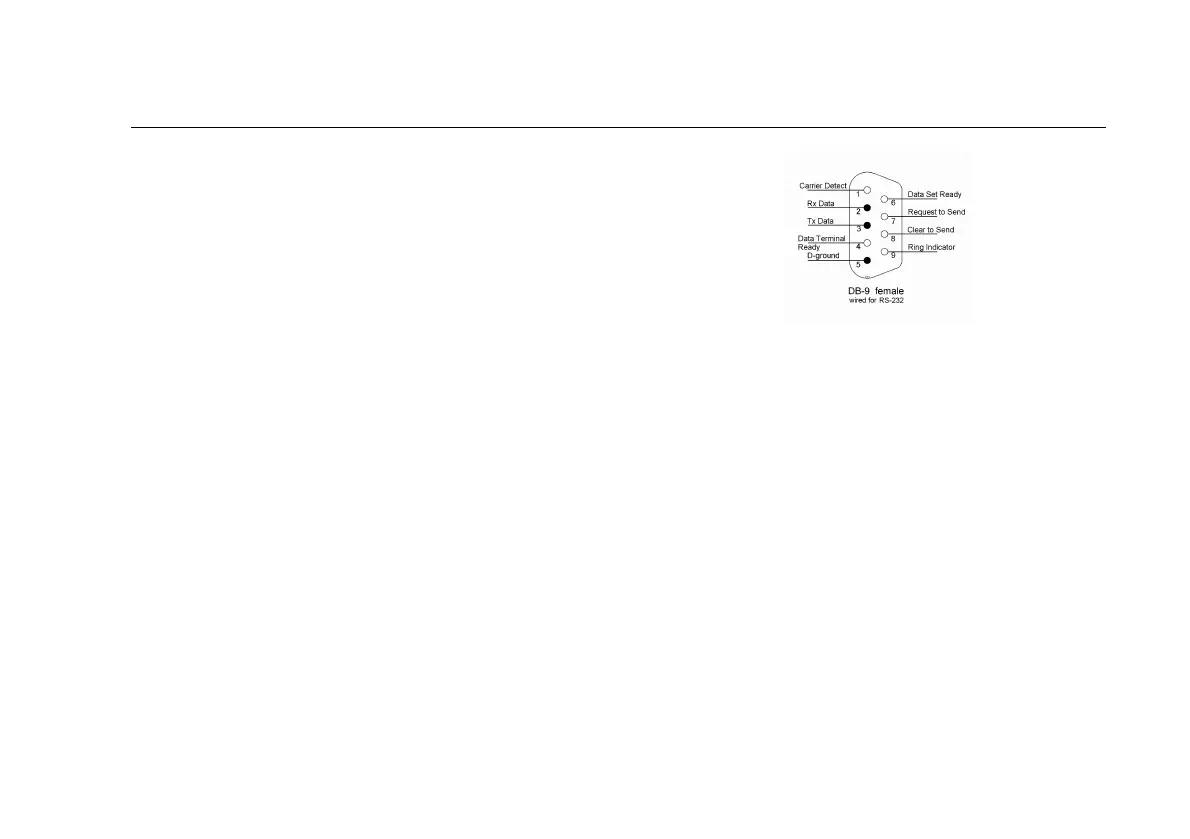Appendices
Bushealth Measurements
A
A-11
RS-232 Bus
RS-232 allows two-way communication between a
controller and a device such as modem, printer, or
sensor. Per device a dedicated link is needed. Initially the
RS-232 definition offered an extensive handshake
protocol with separate handshake lines (hardware
handshake); later software handshake allowed data
exchange via only 2 lines (plus ground). Data rates may
be low, depending on the application.
To check this bustype, ScopeMeter Channel A is on and
DC coupled. The recommended probe is STL120 (1:1).
The probe tip must be connected to the Tx (Transmit) or
Rx (Receive) wire; the COM input (or Black Ground Lead)
to the Signal Ground. In case there are handshake lines,
they each can be checked individually because all use
the same voltage levels. The figure below shows a
Female DB-9 connector wired for hardware handshake.
Lines used for software handshake are indicated with
black dots.
RS-485 Bus
The RS-485 definition specifies differential (balanced)
data lines that are referenced to a ground level. Because
of this, noise immunity is better than for RS-232. The
impedance between the lines is 120 Ω. RS-485 allows for
multiple transmitters and receivers to be connected to the
same bus. Data transmission is adressed to a dedicated
receiver. Data traffic is not continuous.
To check this bustype, ScopeMeter Channel A and B are
on and DC coupled. The recommended probes are
STL120 (1:1). Probe tip A must be attached to the + line;
Probe tip B to the – line, and the COM input (or Black
Ground Lead) to DGND (Data Ground, Signal Ground).

